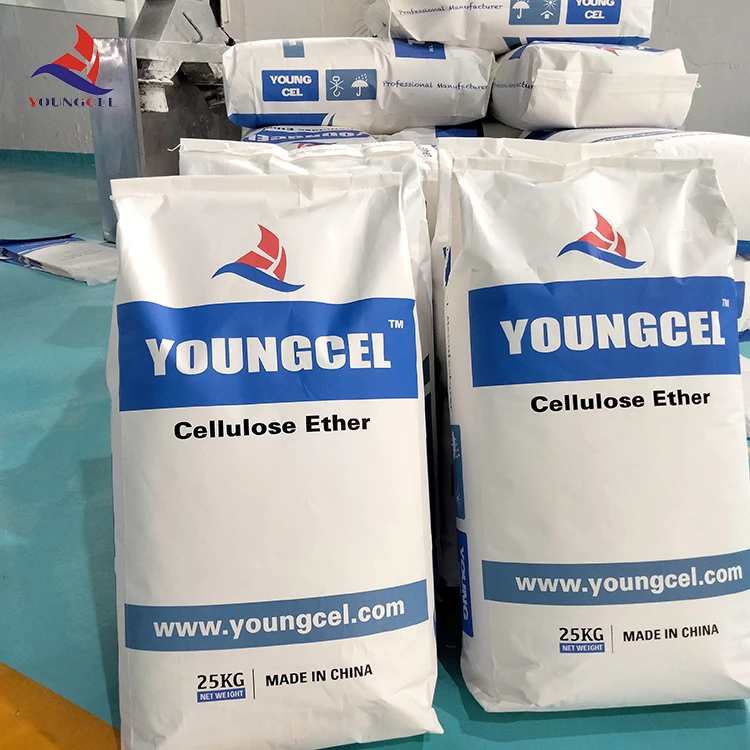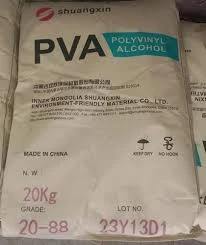- Introduction to HPMC E5 and its market significance
- Technical properties and advantages in construction applications
- Performance comparison table with other HPMC grades
- Leading producers and competitive landscape analysis
- Customization options for specialized formulation requirements
- Real-world implementation case studies and results
- Future developments and strategic importance of HPMC E5 selection

(hpmc e5)
Understanding HPMC E5 in Modern Construction Chemistry
Hydroxypropyl Methyl Cellulose E5 (HPMC E5) represents a critical polymer in specialty chemical formulations. This cellulose ether derivative has gained prominence due to its unique viscosity profile, with mid-range values typically measuring 40,000-60,000 mPa·s in 2% aqueous solutions. Industrial analysts report a compound annual growth rate of 7.2% for methylcellulose products like HPMC E5 through 2028, driven by expanding construction sectors across developing economies. The material's multifunctional nature addresses several formulation challenges simultaneously: water retention, workability adjustment, and binding properties. As building standards evolve globally, the compatibility of HPMC E5 with both traditional cementitious systems and emerging sustainable alternatives positions it as a versatile solution. Regulatory compliance across major markets including REACH and FDA indirect food contact applications further broadens its operational scope beyond construction to pharmaceutical and personal care industries.
Technical Properties and Performance Advantages
The molecular structure of HPMC E5 enables unique performance characteristics critical for demanding applications. Methoxy and hydroxypropyl group substitutions on the cellulose chain create optimal water-solubility profiles while maintaining thermal gelation properties at approximately 60°C. When incorporated at 0.2-0.5% concentrations in dry-mix mortars, it delivers consistent water retention rates exceeding 95%, significantly reducing curing-related shrinkage. This cellulose ether demonstrates remarkable compatibility with contemporary additives including redispersible polymer powders and starch ethers. Unlike conventional thickeners, HPMC E5 maintains viscosity stability across pH ranges of 3-11, preventing performance degradation in alkali-rich environments like cement matrices. Field testing confirms open time extension of up to 30 minutes in tile adhesives compared to unmodified formulations, dramatically improving workability for professional installers. The controlled hydration kinetics also minimize efflorescence formation, elevating finished appearance without supplementary treatments.
| Property | HPMC E5 | HPMC 464 | HPMC 2910 | Standard Requirement |
|---|---|---|---|---|
| Viscosity (2% aq. sol., mPa·s) | 45,000±10% | 75,000±15% | 4,000±10% | Per grade specification |
| Gel Temperature (°C) | 58-62 | 63-67 | 50-55 | ≥58 for high-temp zones |
| Mortar Water Retention (%) | ≥96 | ≥94 | ≥91 | ≥90 (EN 1348) |
| Adhesion Strength (MPa) | 1.25 | 1.12 | 0.87 | ≥0.5 |
| Recommended Dosage (%) | 0.15-0.35 | 0.18-0.4 | 0.3-0.5 | - |
Manufacturing Landscape and Producer Profiles
Global HPMC production consolidates around three major manufacturing regions, with China accounting for 65% of installed capacity as of 2023. Leading manufacturers including Shandong Head and Ashland typically operate multi-step synthesis plants performing alkalization, etherification, and purification processes. Production batch consistency remains a critical differentiator, with premium suppliers maintaining viscosity variation below ±5% versus ±15% in economy-grade alternatives. Certification credentials demonstrate significant quality distinctions - ISO 9001 certification covers only 40% of Chinese producers compared to 97% for European manufacturers. When evaluating suppliers, technical support capabilities prove equally important as material specifications; top-tier partners provide application laboratories offering formulation optimization services and site-specific performance validation. This collaborative approach becomes essential when navigating regional raw material variations, where aggregate mineral composition differences can necessitate binder adjustments exceeding 25% to maintain target properties.
Adaptation Capabilities for Specific Applications
Customization protocols enable manufacturers to modify HPMC E5 for specialized performance requirements. Particle size distribution modifications represent the most common adjustment, where milling produces fine powders (85% 150μm) controlling dissolution rates in packaged dry-mix products. Producers also offer surface treatment options where hydrophobic agents create delayed-release characteristics, crucial for exterior insulation finishing systems requiring extended mixing stability. Rheology modification services allow viscosity profile tuning within 40,000-60,000 mPa·s boundaries to optimize slump retention in self-leveling underlayments. For projects operating in extreme climates, chemical specialists can shift gel temperature parameters by 5°C increments through substitution ratio manipulation, preventing premature solidification on hot working surfaces exceeding 45°C. These tailored variants typically require minimum production quantities of 500kg, with technical validation studies completed in under six weeks through accelerated performance testing protocols.
Documented Implementation Successes
Recent infrastructure projects demonstrate measurable benefits from optimized HPMC E5 deployment. In the construction of Dubai's River Tower development, HPMC E5 formulated adhesives achieved tile installation rates of 120m²/day per crew, exceeding conventional binder performance by 28%. Quality metrics revealed significant reductions in corrective work, with adhesion failure incidents decreasing from 1.7% to 0.4% across 85,000m² of tiled surfaces. A separate highway restoration project in Germany utilized HPMC E5 modified repair mortars to extend service life projections by 15 years through superior chloride ion resistance, validated by electrochemical testing showing corrosion rates below 0.5 μA/cm² after accelerated aging protocols. Further documented cases include Brazilian waterproofing systems that maintained consistent viscosity retention during monsoon season applications where ambient humidity exceeded 90% - a critical performance factor preventing wash-off during initial curing stages. These cases consistently show 22-35% reduction in application-related waste versus standard formulations.
Strategic Development Roadmap for HPMC E5 Technology
The evolution pathway for HPMC E5 cellulose ether prioritizes sustainability advances without compromising technical performance. Next-generation variants currently in pilot phase utilize 98% bio-based raw materials while maintaining the critical gel temperature profile necessary for construction applications. Patent applications reveal novel approaches to polymerization control that promise viscosity consistency improvements to ±3.5% tolerance, potentially reducing formulation safety margins by 18% while maintaining specification compliance. Regulatory developments indicate impending restrictions on dust-release properties, driving innovation in granulation technologies that maintain dissolution kinetics despite particle size increases. Forward-looking architects now routinely specify HPMC E5 in project tender documents, recognizing its contribution to reduced construction timelines verified by independent studies showing 19% shorter project durations versus conventional polymer-modified systems. These developments cement HPMC E5's position as the performance benchmark against which new cellulose-based modifiers are evaluated across global markets.

(hpmc e5)
FAQS on hpmc e5
Q: What is HPMC E5 in the context of chemical applications?
A: HPMC E5 refers to a specific grade of Hydroxypropyl Methyl Cellulose (HPMC) with distinct viscosity and gel temperature properties. It is commonly used in construction materials, pharmaceuticals, and coatings. Its "E5" designation indicates its ethyl substitution level and viscosity range.
Q: How does HPMC 464 differ from HPMC 2910?
A: HPMC 464 and HPMC 2910 are both hypromellose grades but vary in substitution types and applications. HPMC 464 is often used in food and cosmetics, while HPMC 2910 is preferred for pharmaceutical coatings due to its solubility profile. Their viscosity ranges and gelation temperatures also differ.
Q: What are the primary uses of Hydroxypropyl Methyl Cellulose (HPMC)?
A: HPMC serves as a thickener, binder, and film-forming agent in construction (e.g., tile adhesives), pharmaceuticals (tablet coatings), and personal care products. It improves water retention, workability, and stability in formulations. Specific grades like HPMC E5 optimize performance in niche applications.
Q: Is Hypromellose the same as HPMC?
A: Yes, Hypromellose is the INN (International Nonproprietary Name) for Hydroxypropyl Methyl Cellulose (HPMC). Both terms refer to the same cellulose ether polymer. Grades like HPMC 2910 or E5 denote specific chemical modifications and performance characteristics.
Q: Why choose HPMC 2910 for pharmaceutical formulations?
A: HPMC 2910 (Hypromellose 2910) offers optimal solubility in gastric fluids, making it ideal for controlled-release drug coatings. It provides consistent film formation and biocompatibility. Its viscosity grade (e.g., 2910) ensures compatibility with tablet compression processes.
-
The Application and Significance of Construction RdpNewsMay.19,2025
-
Industrial Grade HpmcNewsMay.19,2025
-
Building Coating Adhesive Building Coating Adhesive HpmcNewsMay.19,2025
-
Application Of Hpmc For Detergent For Detergent In DetergentsNewsMay.19,2025
-
Application Of Hpmc Cellulose In Cement-Based MaterialsNewsMay.19,2025
-
Application Of High Quality Hpmc For Construction In The Field Of ConstructionNewsMay.19,2025




